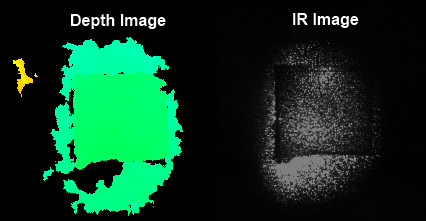Microsoft, always the butt of nerd jokes with Windows and blue screens, has introduced a new device that will revolutionize robotics: the Kinect. It is a depth-camera using structured light that gives full 3D representations of indoor environments within 2 to 10 feet along with a normal camera view. Originally designed to work with the Xbox, people quickly hacked it so you could feed the sensor information into a standard PC. Being in the Robotics Institute at CMU, my friends and I made a trip to Target a week after it was released and bought all the Kinects they had to do cool robotics activities. Apparently we weren’t the only people to have such grand ideas as already there are plenty of people doing really cool things with the Kinect.
My friends and I are currently working on automatic 3D world-building and localization for robots. If you slap a Kinect on a robot, can you use the depth + camera to figure out where you are, construct a 3D world, and colorize it with the cameras? The answer is of course yes, but it remains an open question how to best go about this. My guess is there will be a bunch of papers on this at the next robotics conferences such as ICRA or IROS. Personally, I think it would be really cool to be able to strap a Kinect on your head, run around indoors, build a map of your workplace, and then import it into Quake or another game so you can around killing people in your own custom map.
However, my real official research is with vision based control of a micromanipulator for surgery. So I do a lot of work with 3D reconstruction from stereo surgical microscopes. It would super amazing if the Kinect could be attached to the microscope and used to build a full 3D representation what the surgeon sees. On the OpenKinect driver forums, there were some musings that it might be possible, so I decided to investigate.
The first thing I tried was using the Kinect under a lab bench magnifying glass, and it worked quite well. Interestingly enough, increased magnification made things look farther away, so you could get objects closer to the Kinect and get 3D observations. This makes sense if you think about a magnifying glass as narrowing the spread of the IR projection. Another interesting point is that you do need both the IR projector and IR camera using the same magnification. This means you would need a stereo microscope. Luckily, our microscope is a surgical grade one with stereo. As a crude test, I positioned the IR projector that I got from https://www.buydlp.com/ and IR camera across the eyepieces of our Zeiss OPMI 1 microscope to see if I could get depth by looking down the microscope. Unfortunately, nothing showed up on the depth image so something wasn’t right.
Using the night-vision mode on a Sony HandyCam, I was able to verify that the IR projection was showing up as a bright blurry dot on the target. My guess was that the focus was wrong, so I pulled up the ROS version of the libfreenect library where they had added the ability to get the raw IR camera data. Using the video feed from the IR camera, I was hoping I would be able to focus the dot pattern and get some depth information. Unfortunately, libfreenect on Linux had some issues where it detected bloom and reset the IR projection, which was super annoying. So after some hours of fighting with Linux vs. Windows USB driver code, I was able to port the ROS changes to the OpenKinect Windows drivers so I could view the depth map and IR camera in realtime.
Again, just by positioning the Kinect on the eyepieces of the microscope, I was able to get some interesting results. First, the crude positioning is very crude and resulted in poor alignment of the IR projection. However, at low magnifications, I was able to get some reconstruction of my rubber square (about an 1″ x 1″ x 0.1″) glued to a floppy disk. Unfortunately, higher magnifications become increasingly problematic because as the magnification increases, the perceived depth also increases – beyond the range of the Kinect. At 25X magnification, the depth was splotched dark blue and black, which is the color reserved for the furthest away depths and too far away (or no match). Another problem is illumination as specular reflections become very pronounced under a microscope. Anybody who has worked with wet or metallic items under high magnification and strong illumination can tell you that a specular reflection can completely swamp the scope. As you increase magnification, this becomes quite problematic. Because of these two problems, I was unable to get any good depth information from the highest magnification.
So what can we draw from this? For low magnifications, it seems possible to use the Kinect under a stereo microscope, although not great due to crude positioning. Higher magnifications are more problematic because of specular reflections blooming out the IR camera and the fact that higher magnification increases the perceived depth. Hopefully there are some ways around this. Perhaps some fancy positioning and/or filters might be able to reduce the specular reflections – however, I feel that would be very tricky. The depth problem is more difficult; in this case, it seems that perhaps hardware changes may be required or fancier optics. Hopefully somebody cleverer than myself is working on the problem and will come up with an awesome solution.
